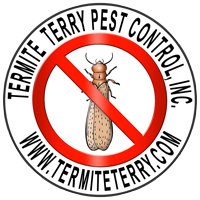Just imagine yourself, with family or friends, sitting by the campfire as you hear the crickets chirping in the background. Nights like that can become a life-long memory. Or, maybe you’re sitting in your parked car on top of a hill with your lover, under the light of the moon as you hear the crickets serenading you with their beautiful music. Experiences like that have created a lot of special romantic evenings.
Only the male crickets are able to produce this “chirp song” and this is their way of declaring their “unceasing” love of the females. Their song is produced by the friction of their upper wings when they rub them together.
Yes, the “chirp songs” produced by crickets can be beautiful; however, crickets can also become quite annoying and create a lot of sleepless nights when they start singing inside of your home.
The house cricket and the field cricket are the two main species of crickets that frequently invade homes.
- House crickets are light yellowish-brown, have wings and are 3/4 to 1 inch long. They are nocturnal, live outdoors in the summer and will invade houses in the winter. It is important to note that they like living in cracks and crevices. House crickets are omnivorous and like bread crumbs and liquids. They will eat ornamental plants, insects and will attack paper, cotton, silk, wool, rubber and a wide variety of foods.
- Field crickets are black, have wings and measure 1/2 to 1 1/4 inch long. They are nocturnal, live outdoors and like living in cracks and crevices. Field crickets eat ornamental plants, consume dead or weak crickets, grasshoppers and other insects. If they invade a home, they may attack cotton, linen, wool, silk and furs.
What Can You Do To Help Control Crickets?
- The first place to start is with good sanitation practices. Trash areas should be cleaned up and garbage cans should never be allowed to sit directly on the ground. Raise them up above ground level using concrete pads or bricks and make sure that debris is not allowed to collect in these areas. If you have firewood stacked next to your home, move it to an area away from the foundation and place it on a special rack or on concrete pads. It is also important to rake up leaves and debris around your yard.
- Water is like a magnet for crickets. Check for plumbing leaks and repair them as needed. Are you overwatering your lawn and plants? Many homeowners are guilty of this and you should really take a little time and check the soil around your home. We all want to have a green lawn and keep our plants nice, but too much water can bring on a lot of problems with crickets, as well as other pests.
- Take a close look at your home. If you see cracks, crevices and other points where crickets can hide or enter your home, you’ll need to seal up these areas. Caulking and patching plaster work great for this kind of work. Check your doors, windows and install weather stripping if needed. Also, make sure your door and window screens are in good order.
- On the interior, start by vacuuming with a crevice tool. Pay special attention to areas where you see cracks and crevices, such as around doors, windows and moldings.
- If insecticide treatment is needed on the interior, use a product that is labeled for use with crickets and carefully follow the label’s instructions. Treatments should be focused in areas where you see cracks and crevices because that is where crickets like to hang out.
- Treatments on the exterior of your home should be done in areas where you see cracks and crevices. Again, use a product that is labeled for this kind of use.
- For extra protection around your home’s exterior, you may want to apply a treatment band of 5 – 20 feet to prevent re-entry. For most homes, you’ll need to use a liquid formulation on your hardscapes and a granular formulation on soil areas around the foundation.
Please remember that when you are trying to control a cricket problem, the first 4 steps are the most important. Pesticides should only be applied if they are needed. You’ll find that many pest control problems can be solved safely without the use of an insecticide.
Do you have a problem with crickets and need help? Please call our office at (949) 631-7348 or click on order form and we’ll be happy to schedule an appointment at your convenience.
